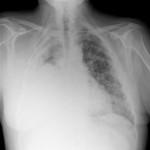All of us are exposed to potentially dangerous substances in many of our household products, but there's been increasing concern that pregnant women need to pay special attention to the ever-growing list of chemicals around the home. I just read an article published in The New York Times nine days ago with the gripping title "Is It Safe to Play Yet?" The subtitle described what's going on in many families: "Going to Extreme Lengths to Purge Household Toxins."
I found a reference to an extraordinary study which examined umbilical cord blood samples drawn from ten infants of minority heritage: African-American, Asian or Hispanic. Five independent laboratories were involved and up to 232 toxic chemicals were found. I was familiar with the Environmental Working Group, one of the two non-profits who commissioned the research, but not with Rachel's Network which I found online. It's a women's organization named in honor of Rachel Carson whose book, Silent Spring, in many aspects launched the modern environmental movement.
EWG had been unable to find any published studies focused on minority group infants, yet some of their homes are more likely to be situated near busy highways and roads, to be closer to industrial shops and factories and to have been built before current safety standards were established.
Other studies have found up to 358 chemicals in cord blood of US infants; some are acknowledged as possible cancer-causing agents, nervous-system toxins or endocrine hormone disrupters. The National Institute of Environmental Health Sciences (NIEHS), part of NIH, says those latter toxins can be found in metal food cans, plastic bottles, food, toys, cosmetics, detergents, pesticides and flame retardants. Their adverse effects have increased potential to harm fetuses and young babies as their bodies develop.
Our Toxic Substances Control Act, is a 1976 law that, unfortunately, grandfathered most existing chemicals. The Environmental Protection Agency (EPA) was mandated to protect the public by regulating the manufacture and sale of chemicals But 60,000 chemicals were excluded because they were already in use and over the following years the EPA succeeded in restricting only five of those: one was asbestos, but two years after the chemical was banned the rule was overturned by the Fifth Circuit Court as being too broad.
In contrast, the European Union, in 2007, passed REACH, the Registration, Evaluation, Authorisation and Restriction of Chemicals act that applies to all chemical substances; not only those used in industrial processes but also in day-to-day lives, for example in cleaning products, paints as well as in articles such as clothes, furniture and electrical appliances.
REACH places the burden of proof on companies. To comply with the regulation, companies must identify and manage the risks linked to the substances they manufacture and market in the EU. They have to demonstrate to a governmental agency how the substance can be safely used, and they must communicate those risk management measures to the users.
One estimate, published in Health Affairs in 2011, estimated the US spends $76.6 billion a year on kids' medical issues that may be related to their environment.
We have a long ways to go, both in determining which chemicals are actually risky and banning or controlling their use.
And, on the other hand, knowing which chemicals, old and new, are safe for us and our offspring.



